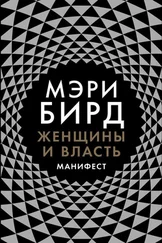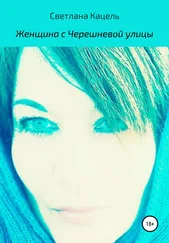Monroe, “The Artists Union of New York”, 80, 149, 167.
Rose, “Life on the Project”, 74–75; Levin, Lee Krasner , 87; Rose, Lee Krasner , 35; Monroe, “The Artists Union of New York”, 73; Lee Krasner, interview by Barbara Novak, AAA-SI, 13; oral history interview with Max Spivak, AAA-SI; oral history interview with Harold Rosenberg, AAA-SI; Landau, Lee Krasner: A Catalogue Raisonné , 302–303.
Lee Krasner, interview by Barbara Novak, courtesy PKHSC; O’Brien, “The Art Criticism of Harold Rosenberg”, 203; oral history interview with Harold Rosenberg, AAA-SI; oral history interview with Max Spivak, AAA-SI; Ashton, The New York School , 53.
Robert Goldwater, “Reflections on the New York School”, 20; oral history interview with Burgoyne Diller, AAA-SI; Lee Krasner , interview by Barbara Novak, 1972, AAA-SI, 2; Lee Krasner, interview by Betty Smit Смит, courtesy PKHSC; Betty Smith, “Women on the Works Progress Administration / Federal Art Project”, courtesy PKHSC; Stahr, «The Social Relations of Abstract Expressionism”, 95; Clements, Prosperity, Depression and the New Deal , 209; Naifeh and Smith, Jackson Pollock , 269; David Sylvester, Interviews with Artists , 3; Giorgio Cavallon, interview by Jack Taylor. Каваллон рассказывал, что тогда можно было жить на три доллара в неделю. А значит, зарплаты для занятых в Проекте было более чем достаточно. Но, по словам Филиппа Густона, некоторым художникам было неудобно «работать на» правительство.
Oral history interview with Harold Rosenberg, AAA-SI; Lee Krasner, interview by Barbara Rose, 1972, AAA-SI, 2; Whitney Chadwick, Women, Art, and Society , 297.
Lee Krasner, interview by Barbara Rose, 1972, AAA-SI, 2; Munro, Originals, 108; Chadwick, Women, Art, and Society , 297; Lee Krasner, interview by Betty Smith, courtesy PKHSC; Stahr, “The Social Relations of Abstract Expressionism”, 95; Parrish , Anxious Decades , 348, 402, 405; William Henry Chafe, The American Woman , 39, 42; Clements, Prosperity, Depression and the New Deal , 209; Naifeh and Smith, Jackson Pollock , 269.
Jack Tworkov, interview by Anne Bowen Parsons, AAA-SI; Ann Eden Gibson, Abstract Expressionism: Other Politics , 10; Sylvester, Interviews with American Artists , 3; Lee Krasner, handwritten biographical notes, Series 2, Subseries 1, Box 7, Folder 14, Lee Krasner Papers, AAA-SI, 16; Harold Rosenberg, Art on the Edge , 196; Rose, Lee Krasner , 37–38.
Lee Krasner, interview by Barbara Novak, videotape courtesy of PKHSC; Lee Krasner, interview by Barbara Rose, 1975, GRI; Lee Krasner, interview by Barbara Rose, 1975, GRI; Lee Krasner, interview by Barbaralee Diamonstein, provided by Dr. Barbaralee Diamonstein-Spielvogel, interviewer and author, from Inside New York’s Art World , 206; “Lee Krasner, Paintings, Drawings and Collages”, 7; Landau, Lee Krasner: A Catalogue Raisonné , 304.
Rose, Lee Krasner , 37–38; Monroe, “The Artists Union of New York”, 54. Художники были настолько эффективны в качестве протестующих, что их прозвали «пожарной командой» и приглашали участвовать в пикетах, организованных другими профсоюзами или объединениями.
Oral history interview with Max Spivak, AAA-SI; oral history interview with Irwing Block, AAA-SI; Monroe, “Artists as Militant Trade Union Workers”, 8. Спивак говорил, что женщины не могли оставлять своих детей дома одних и поэтому брали их везде с собой на протяжении всех этих шумных и эмоционально насыщенных событий.
Ellen G. Landau, Sandra Kraskin, Phyllis Braff, and Michael Zakian, Mercedes Matter , 26, 67n48; McKinzie, The New Deal for Artists , 96; Monroe, “Artists as Militant Trade Union Workers”, 8.
Oral history interview with Eugenie Gershoy, AAA-SI.
Landau et al., Mercedes Matter , 26, 67n48; Levin, Lee Krasner , 118–119; McKinzie, The New Deal for Artists , 96; oral history interview with Irwing Block, AAA-SI.
Schloss, “The Loft Generation”, Edith Schloss Burckhardt Papers, Columbia, 174; Mercedes Matter , interview by Sigmund Koch, Tape 1A, Aesthetics Research Archive; Landau et al., Mercedes Matter , 13.
Landau et al., Mercedes Matter , 17–19, 62n16–17. Данный материал о Мерседес взят из недатированного материала “Autobiographical Sketch”.
Mercedes Matter , interview by Sigmund Koch, Tape 1A, Aesthetics Research Archive; Landau et al., Mercedes Matter , 26; Matossian, Black Angel , 246.
Mercedes Matter , interview by Sigmund Koch, Tape 1A, Aesthetics Research Archive; Monroe, “Artists as Militant Trade Union Workers”, 7; Landau et al., Mercedes Matter , 67n48–49. Слова Мерседес о путешествии по Пятой авеню взяты из “Mercedes Matter in Conversation” и, скорее всего, были процитированы Хейден Эррерой.
Levin, Lee Krasner , 120; Landau et al., Mercedes Matter , 27; Lee Krasner, interview by Barbara Rose, 1975, GRI; Lee Krasner, interview by Barbaralee Diamonstein, provided by Dr. Barbaralee Diamonstein-Spielvogel, interviewer and author, from Inside New York’s Art World , 206; Mercedes Matter , interview by Sigmund Koch, Tape 1A, Aesthetics Research Archive.
Monroe, “Artists as Militant Trade Union Workers”, 8; Monroe, “The Artists Union of New York”, 71–72; Mercedes Matter , interview by Sigmund Koch, Tape 1A, Aesthetics Research Archive.
Lee Krasner, interview by Barbara Novak, courtesy PKHSC.
Oral history interview with Max Spivak, AAA-SI; oral history interview with Irwing Block, AAA-SI; Mercedes Matter, interview by Sigmund Koch, Tape 1A, Aesthetics Research Archive; Monroe, “Artists as Militant Trade Union Workers”, 7–8; McKinzie, The New Deal for Artists , 96.
Oral history interview with Гарольдом Розенбергом, AAA-SI; O’Brien, “The Art Criticism of Harold Rosenberg”, 241, 254; Potter, To a Violent Grave , 64.
Levin, Lee Krasner , 95; Monroe, “Artists as Militant Trade Union Workers”, 7; Landau, Lee Krasner: A Catalogue Raisonné , 303.
Oral history interview with Harold Rosenberg, AAA-SI.
Rose, Lee Krasner , 37–38; Landau, Lee Krasner: A Catalogue Raisonné , 304–5; Levin, Lee Krasner , 107–8, 112–113.
Читать дальше
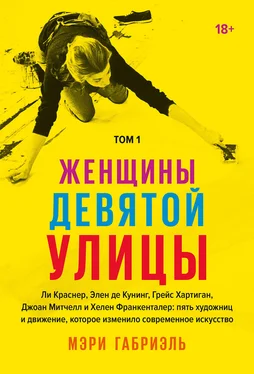
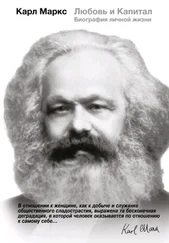
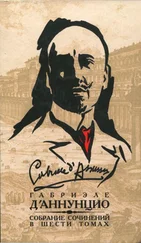





![Мэри Габриэль - Женщины Девятой улицы. Том 1 [Ли Краснер, Элен де Кунинг, Грейс Хартиган, Джоан Митчелл и Хелен Франкенталер - пять художниц и движение, изменившее современное искусство]](/books/397801/meri-gabriel-zhenchiny-devyatoj-ulicy-tom-1-li-kra-thumb.webp)

